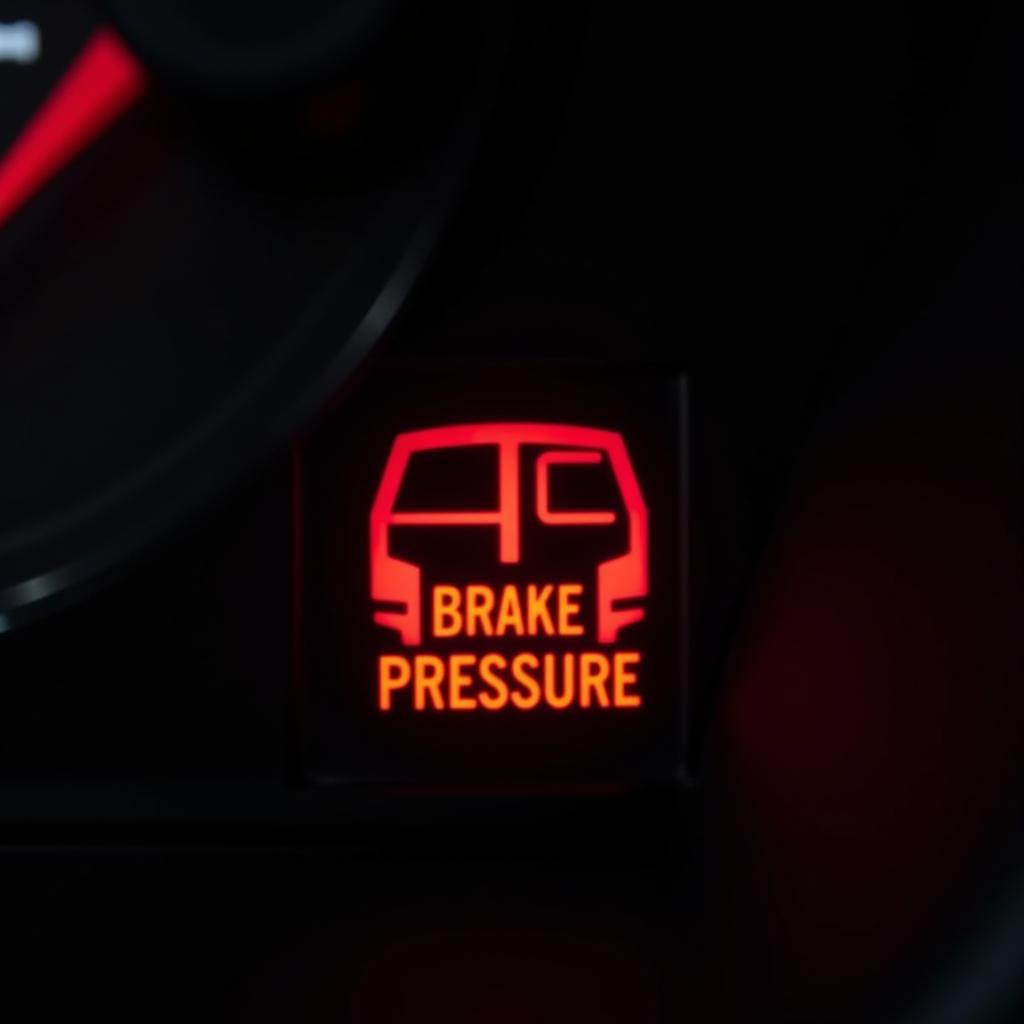Imagine this: you’re driving along, enjoying the scenery, when suddenly a yellow or red light resembling a horseshoe with an exclamation mark inside illuminates your dashboard. It’s the dreaded brake warning light, often accompanied by the words “BRAKE” or “ABS.” This ominous symbol sends shivers down any driver’s spine, and rightly so. It signifies a potential issue with your vehicle’s braking system, a system your safety critically depends on.
This comprehensive guide will delve into the common causes of a brake warning light, help you decode its message, and outline steps you can take to address this issue effectively.
Deciphering the Warning Light
The appearance of the brake warning light, whether a brief flicker or a persistent glow, typically indicates one or more problems with your vehicle’s braking system. The severity and nature of the issue can vary depending on the accompanying symptoms and the specific light patterns.
Common Causes of a Brake Warning Light
- Low Brake Fluid: This is one of the most common culprits. Brake fluid, the lifeblood of your car’s hydraulic braking system, can deplete over time due to leaks or worn brake pads.
- Worn Brake Pads: Brake pads are designed to wear down with use. When they reach a critical point, a sensor triggers the warning light, indicating the need for a replacement.
- Faulty ABS System: A problem with the Anti-lock Braking System (ABS), such as a malfunctioning sensor or a faulty control module, can trigger the warning light.
- Parking Brake Engaged: It might sound obvious, but sometimes the simplest explanation is the most likely. If you’ve left your parking brake partially engaged, the warning light might illuminate.
- Faulty Brake Light Switch: In some cases, a malfunctioning brake light switch, responsible for activating your brake lights when you press the pedal, can also trigger the brake warning light.
What to Do When the Light Turns On
- Don’t Panic: While seeing the brake warning light can be alarming, it’s crucial to remain calm and assess the situation.
- Check Your Parking Brake: As mentioned earlier, ensure your parking brake is fully disengaged. If the light goes off, you’ve likely resolved the issue.
- Carefully Pull Over: If the light remains on, find a safe location to pull over as soon as possible. Driving with a potential brake problem is incredibly risky.
- Check Your Brake Fluid Level: With the engine off and the vehicle parked on a level surface, carefully open the hood and locate the brake fluid reservoir. The reservoir will typically have a visible “min” and “max” marking. If the fluid level is below the “min” mark, you’ll need to add more brake fluid.
- Inspect for Leaks: While checking the brake fluid level, examine the area around the reservoir and under the vehicle for any signs of leaks. Brake fluid is typically clear or yellowish and has a slightly oily texture.
Seeking Professional Help
If you’ve checked the basics and the brake warning light persists, it’s crucial to seek professional help immediately. Driving with a compromised braking system is incredibly dangerous and could lead to accidents. A qualified mechanic can diagnose the specific issue using advanced diagnostic tools and perform the necessary repairs to ensure your vehicle’s braking system is functioning correctly.
Remote Diagnostics and Software Solutions: The Future of Car Repair
In today’s technologically advanced world, remote diagnostics and software solutions are revolutionizing the automotive repair industry. Imagine having your car diagnosed and, in some cases, even repaired remotely, without ever stepping foot in a mechanic’s shop.
how to program anti theft module on 08 silverado
As a specialist in automotive electrical engineering, I’ve witnessed firsthand the transformative power of these technologies. Remote diagnostics allow us to access a vehicle’s onboard computer systems remotely, retrieve diagnostic trouble codes, and analyze real-time data, providing valuable insights into the issue.
In some instances, we can even resolve the problem remotely by reprogramming software, updating firmware, or resetting system parameters. This not only saves time and money but also provides a more convenient and efficient repair experience.
Expert Insight: John Miller, Automotive Electrical Engineer
“The brake system is arguably the most critical safety feature in your vehicle. Ignoring a brake warning light is akin to playing Russian roulette with your safety and the safety of others on the road. When you see that light, it’s not the time to procrastinate – it’s a call to action.”
FAQs about Brake Warning Lights
Q: Can I drive a short distance with the brake warning light on?
A: It’s highly discouraged. Driving with a potential brake problem puts you and others at risk.
Q: How often should I check my brake fluid level?
A: It’s good practice to check your brake fluid level at least once a month and more frequently if you notice any changes in your brake pedal feel.
Q: How long do brake pads typically last?
A: Brake pad lifespan varies depending on driving conditions and habits, but they typically last between 25,000 and 70,000 miles.
Conclusion: Prioritizing Safety
In the realm of automotive safety, the brake warning light reigns supreme. Understanding its significance and taking prompt action can be the difference between a minor inconvenience and a major disaster. Remember, your safety and the safety of others on the road should always be your top priority. Don’t ignore the warning signs—address them head-on and drive with confidence, knowing your vehicle is in optimal condition.


